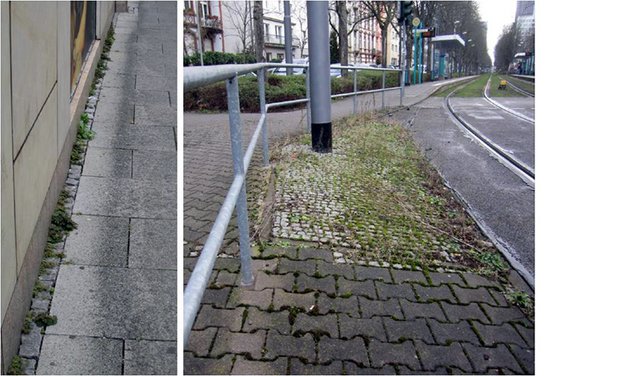Although pavement grooves represent an ubiquitary habitat in urban areas, research has been focusing mostly on prevention of vegetation within it.
However, this study investigated the flora and vegetation of pavement grooves as well as the impact of different parameters on biodiversity, including groove width and type of paving. For this purpose, approximately 1 % of the area of Frankfurt, which comprises 32 ha of publicly accessible paved paths, was analysed by floristic mapping and vegetation assessment.
Within the analysed area, a total of 317 species were documented, some of which for the first time in Hesse or Frankfurt: Cyperus eragrostis and Polycarpon tetraphyllum, respectively - besides Mazus pumilus which was recordet for the first time in Germany. Nine phytosociological societies were identified. Generally, biodiversity was found to be higher in extensive, difficult to access, or less frequented pavements compared to smaller or more frequented pavements. Moreover, natural stone-paved areas were richer in species than areas paved with concrete blocks or slabs, which is presumably attributed to wider grooves of natural stone paving.
Based on these results, the establishment of natural stone stripes to retain a pavement groove habitat in Frankfurt was suggested. Particularly areas with limited accessibility, e.g., flanks of wall bases, are appropriate for natural stone paving. The natural stone stripes are then vegetated either naturally or aided by seeding. This approach can be integrated in the "Spokes and Rays"-concept, which intends to reduce car traffic and increase greening in order to improve quality of air and climate as well as the area of green spaces within the city of Frankfurt.
___
Franziska Walther conducted this work at the Institut for Ecology, Evolution and Diversity at Goethe-Universität Frankfurt in the working group of Prof. Dr. Georg Zizka.


